Kia EV6 vs Nissan Leaf – Differences & prices compared
Compare performance, boot space, consumption and price in one view.
Find out now: which car is the better choice for you – Kia EV6 or Nissan Leaf?
The Kia EV6 (SUV) comes with a Electric engine and Automatic transmission. In comparison, the Nissan Leaf (Hatchback) features a Electric engine with Automatic transmission.
When it comes to boot capacity, the Kia EV6 offers 490 L, while the Nissan Leaf provides 394 L – depending on how much space you need. If you’re looking for more power, decide whether the 609 HP of the Kia EV6 or the 217 HP of the Nissan Leaf suits your needs better.
In terms of consumption, the values are 15.90 kWh per 100 km for the Kia EV6, and 16.70 kWh for the Nissan Leaf.
Price-wise, the Kia EV6 starts at 38600 £, while the Nissan Leaf is available from 30800 £. Compare all the details and find out which model fits your lifestyle best!
In the increasingly competitive electric vehicle market, the Kia EV6 stands out with its striking design and impressive performance capabilities, often lauded for its fast charging and spirited driving dynamics. In contrast, the Nissan Hoja offers a more traditional approach with a focus on practicality and technology integration, catering to families and everyday commuters alike. While both models showcase the future of electric mobility, potential buyers will need to weigh their priorities between style, performance, and usability in their decision-making process.
Kia EV6
The Kia EV6 is an impressive contender in the electric vehicle market, blending futuristic design with sustainable driving. Its sleek exterior combined with a spacious and tech-savvy interior provides both style and comfort for modern drivers. With a focus on performance, the EV6 delivers an exhilarating driving experience while maintaining an eco-friendly footprint.
details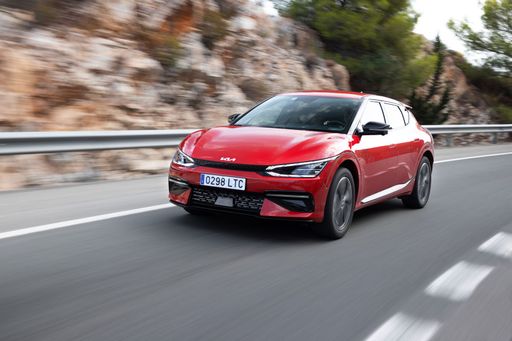 @ press.kia.com
@ press.kia.com
 @ press.kia.com
@ press.kia.com
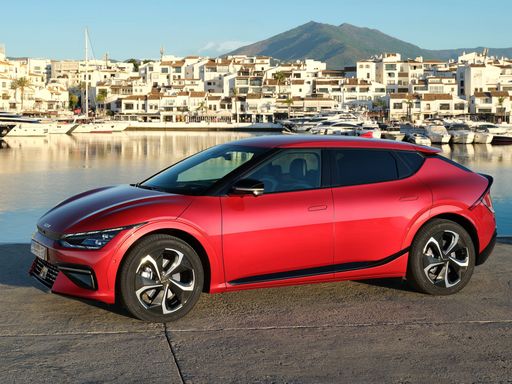 @ press.kia.com
@ press.kia.com
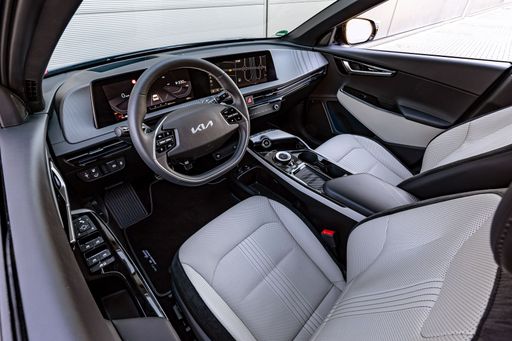 @ press.kia.com
@ press.kia.com
 @ press.kia.com
@ press.kia.com
Nissan Leaf
The Nissan Leaf stands out as a pioneering model in the realm of electric vehicles, known for its impressive blend of practicality and eco-friendliness. It offers a smooth and quiet driving experience, making it an ideal choice for city commuting and longer journeys alike. The interior design is both comfortable and intuitive, providing drivers with a sense of modernity and ease of use.
details @ germany.nissannews.com
@ germany.nissannews.com
 @ germany.nissannews.com
@ germany.nissannews.com
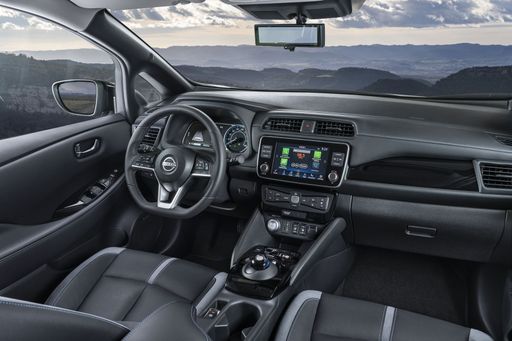 @ germany.nissannews.com
@ germany.nissannews.com
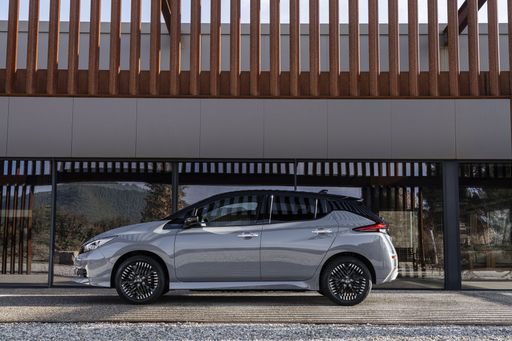 @ germany.nissannews.com
@ germany.nissannews.com
The Showdown: Kia EV6 vs. Nissan Hoja
The automotive landscape is undergoing a revolutionary shift towards electric vehicles (EVs), and at the forefront of this transition are the Kia EV6 and Nissan Hoja. These two EVs showcase the innovation and engineering prowess of their respective brands. In this article, we will closely compare their specifications, performance, and innovations, helping you decide which electric vehicle fits your needs best.
Design and Dimensions
The Kia EV6 is classified as an SUV, boasting a robust and dynamic presence with dimensions of 4695 mm in length, 1880 mm in width, and 1550 mm in height. The sleek design is further accentuated by its sporty silhouette and aggressive front fascia.
On the other hand, the Nissan Hoja, a hatchback, offers a more compact profile. It measures 4490 mm long, 1788 mm wide, and 1545 mm tall. The hatchback design promotes practicality and efficiency, making it an attractive choice for urban drivers.
Powertrain and Performance
The Kia EV6 is highly versatile, offering multiple options ranging from a 170 HP base model to an impressive 609 HP in its performance variant. With options for both rear-wheel drive and all-wheel drive, the EV6 can accelerate from 0 to 100 km/h in as little as 3.5 seconds. This impressive powertrain setup is complemented by an electric range of up to 582 km, depending on the battery option (63 kWh and 84 kWh) selected.
In contrast, the Nissan Hoja offers a maximum output of 217 HP, with its electric range capped at 385 km. While its performance doesn't quite match the Kia EV6, it still manages an acceleration from 0 to 100 km/h in 6.9 seconds. Available in battery capacities of 39 kWh and 59 kWh, the Hoja is tailored for efficiency with a consumption rate of 16.7 kWh/100km.
Technology and Innovations
The Kia EV6 is truly a testament to technological advancement, featuring cutting-edge driver-assist systems, a large infotainment screen, and high-quality interior materials, all designed to enhance the driving experience. The latest model also embraces future mobility trends with its ultra-fast charging capabilities, allowing users to charge from 10 to 80% in just 18 minutes.
Nissan’s Hoja may not be as feature-rich as the EV6, but it still showcases commendable tech. The vehicle includes a range of safety features and a user-friendly infotainment system. Additionally, the Hoja's design promotes energy efficiency, making it a practical choice for those looking to navigate city streets with ease.
Interior and Comfort
Inside the Kia EV6, you'll find a spacious cabin designed to accommodate five passengers comfortably. With a trunk capacity of 490 liters, it also edges out the Hoja's capacity of 394 liters, making it more suited for families or those who appreciate extra cargo space. The quality of materials used in the EV6 adds a premium feel that many users find appealing.
The Nissan Hoja, while offering comfort for five, provides a slightly more compact interior space. However, its layout is designed efficiently to make the best use of its size. The hatchback configuration allows for versatile cargo handling, which will be appreciated by urban dwellers and those who prioritize practicality.
Conclusion: Which EV Takes the Crown?
In conclusion, both the Kia EV6 and Nissan Hoja present compelling cases for EV buyers. The EV6 is a powerhouse with superior performance metrics and innovative technology, appealing to those who prioritize power and range. Meanwhile, the Hoja offers a more compact and practical solution, perfect for urban environments.
Your choice ultimately depends on your specific needs: if you seek performance and cutting-edge features, the Kia EV6 is undoubtedly the front-runner. However, if you're looking for a more compact and efficient vehicle for city driving, the Nissan Hoja should be high on your list.

|

|
|
|
|
Costs and Consumption |
|
|---|---|
|
Price
38600 - 60000 £
|
Price
30800 - 37200 £
|
|
Consumption L/100km
-
|
Consumption L/100km
-
|
|
Consumption kWh/100km
15.9 - 20.9 kWh
|
Consumption kWh/100km
16.7 - 17.8 kWh
|
|
Electric Range
428 - 582 km
|
Electric Range
270 - 385 km
|
|
Battery Capacity
63 - 84 kWh
|
Battery Capacity
39 - 59 kWh
|
|
co2
0 g/km
|
co2
0 g/km
|
|
Fuel tank capacity
-
|
Fuel tank capacity
-
|
Dimensions and Body |
|
|---|---|
|
Body Type
SUV
|
Body Type
Hatchback
|
|
Seats
5
|
Seats
5
|
|
Doors
5
|
Doors
5
|
|
Curb weight
1955 - 2220 kg
|
Curb weight
1580 - 1756 kg
|
|
Trunk capacity
480 - 490 L
|
Trunk capacity
385 - 394 L
|
|
Length
4695 mm
|
Length
4490 mm
|
|
Width
1880 - 1890 mm
|
Width
1788 mm
|
|
Height
1545 - 1550 mm
|
Height
1540 - 1545 mm
|
|
Payload
440 - 450 kg
|
Payload
384 - 415 kg
|
Engine and Performance |
|
|---|---|
|
Engine Type
Electric
|
Engine Type
Electric
|
|
Transmission
Automatic
|
Transmission
Automatic
|
|
Transmission Detail
Reduction Gearbox
|
Transmission Detail
Reduction Gearbox
|
|
Drive Type
Rear-Wheel Drive, All-Wheel Drive
|
Drive Type
Front-Wheel Drive
|
|
Power HP
170 - 609 HP
|
Power HP
150 - 217 HP
|
|
Acceleration 0-100km/h
3.5 - 8.7 s
|
Acceleration 0-100km/h
6.9 - 7.9 s
|
|
Max Speed
185 - 260 km/h
|
Max Speed
144 - 157 km/h
|
|
Torque
350 - 770 Nm
|
Torque
320 - 340 Nm
|
|
Number of Cylinders
-
|
Number of Cylinders
-
|
|
Power kW
125 - 448 kW
|
Power kW
110 - 160 kW
|
|
Engine capacity
-
|
Engine capacity
-
|
General |
|
|---|---|
|
Model Year
2024 - 2025
|
Model Year
2019
|
|
CO2 Efficiency Class
A
|
CO2 Efficiency Class
A
|
|
Brand
Kia
|
Brand
Nissan
|
Kia EV6
Discovering the Kia EV6: A Leap into the Future of Electric Mobility
The Kia EV6 is a remarkable embodiment of innovation and sophistication in the world of electric vehicles. As a groundbreaking addition to Kia's lineup, the EV6 challenges the norms of electric driving with its exceptional engineering and forward-thinking design. This model offers an exciting blend of cutting-edge technology, robust performance, and sustainable mobility, marking it as a standout choice in the competitive electric vehicle market.
Power and Performance: A Dynamic Driving Experience
Under the hood, the Kia EV6 boasts a variety of powertrains tailored to different driving preferences. The EV6 is available in several versions, each with its unique specifications. The entry-level model comes equipped with a 63 kWh battery, delivering 170 HP and an impressive range of 428 km. For those seeking more power, there is an 84 kWh option with 229 HP, extending the range to an impressive 582 km. The most powerful variant features an all-wheel drive system with 325 HP, ensuring a thrilling drive with a range of 546 km.
Technical Brilliance: Efficiency and Speed
Kia's dedication to efficiency is evident in the EV6, with energy consumption figures as low as 15.9 kWh/100 km. This electric vehicle speeds from 0 to 100 km/h in as little as 5.3 seconds, depending on the model, which is a testament to its superior performance engineering. Its top speeds reach up to 188 km/h, allowing for both performance and practicality in everyday driving.
Design and Comfort: A New Standard in Electric Vehicles
The EV6's design merges functionality with aesthetics, resulting in a sleek and aerodynamic SUV body type. With a length of 4695 mm and a cargo capacity of 490 liters, it offers ample space for both passengers and luggage. Inside, the EV6 comfortably seats up to five occupants, combining premium materials with high-tech features to provide an unparalleled comfort experience. Various trim levels, such as Air, Earth, and GT Line, add a personalized touch to match the driver's style and preferences.
Innovations in Sustainability
At the heart of the Kia EV6's appeal is its commitment to sustainability. As an all-electric vehicle, the EV6 produces zero CO2 emissions, earning it an A-class efficiency rating. With a payload capacity of up to 450 kg and a curb weight that varies between 1955 and 2150 kg, it manages to balance durability and eco-friendliness effectively.
A Worthy Investment: Pricing and Value
The Kia EV6 is priced competitively, ranging from €44,990 for the base model to €60,890 for the top-tier versions. This pricing strategy ensures that the EV6 remains accessible to a wide range of drivers looking to transition to electric mobility without compromising on quality and performance. With sophisticated technology, remarkable range, and sustainable operations, the EV6 promises a future-ready driving experience.
Conclusion: Pioneering a New Era
The Kia EV6 is not just a car; it's a vision of the future in personal transportation. By incorporating advanced technology, sustainable practices, and striking design, Kia has set a new benchmark for what electric vehicles can achieve. As drivers continue to seek more eco-friendly options without sacrificing performance or style, the EV6 emerges as a true leader in the electric vehicle revolution.
This model marks a significant milestone for Kia, showcasing its commitment to innovation and excellence in the field of electric vehicles. With its ambitious performance metrics, extensive range options, and environmentally conscious features, the Kia EV6 stands out as a remarkable achievement in the realm of modern automotive engineering.
Nissan Leaf
Introduction to the Nissan Leaf: A Pioneer in Electric Mobility
The Nissan Leaf has established itself as a trailblazer in the realm of electric vehicles (EVs) since its launch. As we delve into its present-day iterations, the Leaf continues to soar in popularity due to remarkable advancements in technology and sustainability. Let's explore what makes the Nissan Leaf a standout in today's automotive market.
Power and Performance: Under the Hood of the Nissan Leaf
The Nissan Leaf boasts a power output ranging from 150 to 217 PS, depending on the battery option chosen. The vehicle's electric motor, a product of cutting-edge engineering, offers instant torque ranging from 320 to 340 Nm, resulting in impressive acceleration capabilities. The 0 to 100 km/h dash is achieved in as little as 6.9 seconds, showcasing its prowess in electric performance.
Battery Technology: Efficient Energy Management
When discussing the Nissan Leaf, battery technology is at the forefront. The available battery capacities range from 39 to 59 kWh, supporting an electric range between 270 to 385 km. This flexibility allows drivers to choose a model that best fits their driving habits, providing peace of mind for longer journeys without frequent recharging.
Sustainability: The Environmental Edge
One of the primary attractions of the Nissan Leaf is its commitment to sustainability. As an all-electric vehicle, it produces zero CO2 emissions, placing it in the top tier of the CO2-efficiency class with an 'A' rating. This clean energy approach contributes significantly to reducing environmental impact and supports Nissan's drive towards a greener future.
Design and Comfort: Aesthetic Appeal and Practicality
The Nissan Leaf is not just about efficiency; it's also designed for comfort and utility. With its sleek hatchback body and dimensions of 4490 mm in length, 1788 mm in width, and a height of up to 1545 mm, it offers ample interior space. The boot capacity ranges from 385 to 394 litres, providing sufficient storage for everyday needs. The model accommodates five passengers comfortably, ensuring a pleasant ride for everyone.
Innovations and Safety: Advanced Features for Peace of Mind
Nissan equips the Leaf with an array of intelligent features that enhance safety and convenience. The available equipment lines, including N-CONNECTA, Tekna, e+ N-CONNECTA, and e+ Tekna, offer varying levels of technology integration. ProPILOT Assist, e-Pedal, and a comprehensive suite of driver-assistance technology are just a few examples that highlight Nissan's commitment to innovation in the EV market.
Conclusion: The Nissan Leaf Continues to Lead
With prices ranging from €35,900 to €43,400, the Nissan Leaf remains an attractive choice for those looking to embrace electric mobility. It perfectly balances performance, design, and sustainability, making it a compelling choice in the competitive EV landscape. The Nissan Leaf not only represents the future of driving but also reinforces why it continues to be a leader in the electric vehicle community.
Which drive types are available for the Kia EV6?
Available as Rear-Wheel Drive or All-Wheel Drive.
The prices and data displayed are estimates based on German list prices and may vary by country. This information is not legally binding.
